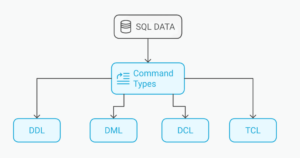Does Your Text to Code Ratio Matter?
A page’s text to code ratio is a measure of the quantity of content compared to the structure. For example, assume your page is 1,000 bytes. If 700 bytes are used for HTML tags and embedded CSS or JavaScript, 300 bytes would be readable content. You would have a text ratio of 3:7 or percentage of 30%. There are many tools to help you assess the figure — one of the easiest to use is DOM Monster.
But is there an ideal text to code ratio?
Search Engine Optimization
Some SEO experts claim that higher text ratios improve search engine positions. I’ve even seen 42% stated as a magical perfect percentage which will boost your Google PageRank. However, I suspect that number’s been plucked by an SEO snake oil “specialist” with a Hitchhiker’s Guide to the Galaxy obsession.
Personally, I don’t believe the text to code ratio has a significant impact on SEO. That said, Google ignores content beyond the first 100Kb so larger pages could benefit from a higher text ratio. However, if you’re exceeding 100Kb, I’d suggest splitting documents into several more focused pages would be a more constructive SEO exercise.
Code Efficiency
In general, it’s best practice to use the least amount of code possible. Unnecessary tags incur additional page weight, slower downloads and more inefficient browser rendering. It also makes your code harder to maintain.
If your pages are lightweight and use clean, semantic HTML with external CSS and JavaScript files, your text to code ratio will naturally fall. There are a few exceptions:
- Shorter pages will have a low text ratio because you require a minimum number of code elements to create a valid HTML document.
- Media-heavy pages, such as a gallery with images or videos, typically have low text ratio.
- Flash or Ajax-powered web applications may not have any content whatsoever — but it’s still there.
In general though, a text to code ratio which exceeds 50% is achievable on
most content pages.
So should we, as conscientious developers, measure our text to code ratios?
If you’re already using good coding techniques, there’s little need to bother. You could use it as a factor when measuring efficiency since a good developer will generally have a higher text to code ratio. However, ratios should never be considered in isolation. After all, a page scoring 25% which works everywhere is usually better than one which scores 50% but fails in most browsers.
Do you consider your page’s text to code ratios? Do you use it to evaluate your own performance?
Frequently Asked Questions (FAQs) about Text-to-Code Ratio
What is the significance of the text-to-code ratio in SEO?
The text-to-code ratio is an important factor in Search Engine Optimization (SEO). It refers to the percentage of visible text versus the percentage of HTML code on a webpage. Search engines use this ratio to determine the relevancy of a webpage. A higher text-to-code ratio is often seen as a positive signal by search engines, as it suggests that the page contains more relevant, useful content for users.
How can I calculate the text-to-code ratio?
The text-to-code ratio can be calculated by dividing the amount of text content on your webpage by the total code used on the page. This ratio is usually expressed as a percentage. There are several online tools available that can help you calculate this ratio, such as the one provided by SitePoint.
What is considered a good text-to-code ratio?
While there’s no definitive answer to what constitutes a ‘good’ text-to-code ratio, it’s generally recommended to aim for a ratio of at least 20%. This means that 20% of your page’s content should be visible text. However, the most important thing is to ensure that your content is high-quality, relevant, and useful to your users.
Can a low text-to-code ratio affect my website’s SEO?
Yes, a low text-to-code ratio can potentially impact your website’s SEO. If your webpage contains more code than text, it may be seen as less relevant by search engines. This could result in lower search rankings. However, it’s important to note that the text-to-code ratio is just one of many factors that search engines consider when ranking webpages.
How can I improve my text-to-code ratio?
There are several ways to improve your text-to-code ratio. One of the most effective methods is to increase the amount of relevant, high-quality text on your webpage. You can also reduce the amount of unnecessary code on your page, such as removing redundant tags or optimizing your CSS and JavaScript.
Does the text-to-code ratio affect website loading speed?
Yes, the text-to-code ratio can impact your website’s loading speed. Pages with a high amount of code can take longer to load, which can negatively impact user experience and SEO. By optimizing your code and improving your text-to-code ratio, you can help improve your website’s loading speed.
Is the text-to-code ratio the same as the content-to-code ratio?
While they are similar, the text-to-code ratio and content-to-code ratio are not exactly the same. The text-to-code ratio refers specifically to the amount of visible text compared to the total code on a webpage. The content-to-code ratio, on the other hand, includes all types of content, such as images and videos, in addition to text.
Can I check the text-to-code ratio of my competitors’ websites?
Yes, you can use online tools to check the text-to-code ratio of any webpage, including those of your competitors. This can give you valuable insights into their SEO strategies and help you identify areas where you can improve your own website.
Does the text-to-code ratio affect mobile SEO?
Yes, the text-to-code ratio can impact mobile SEO. Mobile devices often have slower internet connections and less processing power than desktop computers, so pages with a high amount of code can take longer to load on mobile devices. This can negatively impact user experience and SEO.
Should I prioritize improving my text-to-code ratio over other SEO strategies?
While improving your text-to-code ratio can help improve your SEO, it’s important to remember that it’s just one of many factors that search engines consider when ranking webpages. You should also focus on other SEO strategies, such as keyword optimization, link building, and improving user experience.
Craig is a freelance UK web consultant who built his first page for IE2.0 in 1995. Since that time he's been advocating standards, accessibility, and best-practice HTML5 techniques. He's created enterprise specifications, websites and online applications for companies and organisations including the UK Parliament, the European Parliament, the Department of Energy & Climate Change, Microsoft, and more. He's written more than 1,000 articles for SitePoint and you can find him @craigbuckler.



